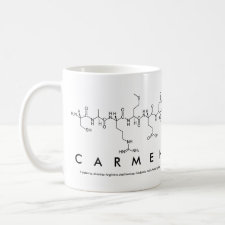
Authors: Alvarez-Lorenzo C, Hiratani H, Gómez-Amoza JL, Martínez-Pacheco R, Souto C, Concheiro A
Article Title: Soft contact lenses capable of sustained delivery of timolol.
Publication date: 2002
Journal: Journal of Pharmaceutical Sciences
Volume: 91
Issue: (10)
Page numbers: 2182-2192.
DOI: 10.1002/jps.10209
Abstract: The aim of this work was to evaluate the influence of the composition and the application of an imprinting technique on the loading capability of weakly crosslinked hydroxyethyl methacrylate (HEMA) hydrogels, with a view to their use as reloadable soft contact lenses for administration of timolol. Hydrogels were prepared by dissolution of ethylene glycol dimethacrylate (EGDMA, 10 mM) in HEMA with or without methacrylic acid (MAA) or methyl methacrylate (MMA; 100-400 mM) and with or without timolol maleate (10 mg/mL), initiation of polymerization by addition of 2,2'-azo-bis(isobutyronitrile) (AIBN, 10 mM), injection in molds, and curing in an oven at 50- 70degreesC. Unreacted reagents were removed by boiling. The dry hydrogels were clear and fully polymerized with smooth, poreless surfaces and presented optimal mechanical properties. The hydrogels were then characterized by determination of their swelling and timolol release kinetics in 0.9% NaCl, phosphate buffer (pH 7.4) and artificial lacrimal fluid, and of the timolol loading capacity of both nonimprinted hydrogels and de- timololized imprinted hydrogels at various pHs. Both water uptake and timolol release exhibited Fickian kinetics, except in the case of hydrogels made with 400 mM MAA. Timolol diffusion into 0.9% NaCl from HEMA or HEMA/MMA was slow; release from HEMA/MAA into phosphate buffer or lacrimal fluid was faster and increased with the MAA content of the polymer. Timolol loading was significant for HEMA/MAA hydrogels (imprinted or not) at pH 5.5-7.5, and specially for imprinted hydrogels containing 100 mM MAA, which absorb 12 mg timolol/g dry hydrogel. The results indicate that the incorporation of MAA as comonomer increases the timolol loading capacity to therapeutically useful levels while retaining appropriate release characteristics. (C) 2002 Wiley-Liss, Inc



Join the Society for Molecular Imprinting

New items RSS feed
Sign-up for e-mail updates:
Choose between receiving an occasional newsletter or more frequent e-mail alerts.
Click here to go to the sign-up page.
Is your name elemental or peptidic? Enter your name and find out by clicking either of the buttons below!
Other products you may like:
 MIPdatabase
MIPdatabase









